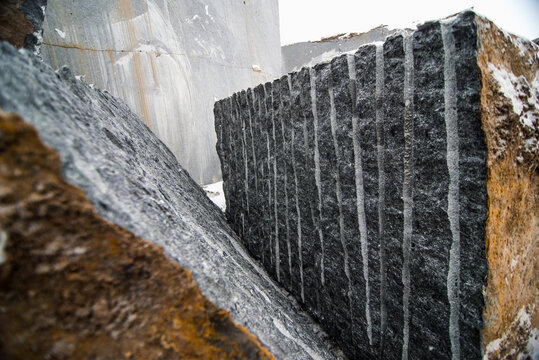A Trip With Granite Quarries in South Africa: Unveiling Nature's Artistry
Introducing the Mysteries of Granite Quarrying: Where Toughness and Style Meet
The globe of granite quarrying is a realm where the raw strength of nature converges with human creativity to produce structures that stand the test of time with an air of elegance. From the depths of quarries to the thorough polishing in workshops, the process of transforming granite right into architectural wonders is a complicated dancing of practice and development. As we peer into the midsts of this ancient craft, we start to reveal the hidden complexities that shape the very essence of our built atmosphere.
The Beginnings of Granite Quarrying
In the record of architectural background, the beginnings of granite quarrying are shrouded in a tapestry of old workmanship and geological marvels. Going back to ancient Egypt and Mesopotamia, the removal of granite from quarries marked the start of a journey that would ultimately result in the development of several of the globe's most legendary structures.
Granite quarrying's roots can be traced to the experienced craftsmens who acknowledged the stone's resilience and visual charm. Via a mix of primitive tools and sheer decision, these early quarry employees unearthed granite blocks that would certainly come to be the building blocks of human beings.
As civilizations advanced, so did the techniques of quarrying granite. The Romans, renowned for their engineering expertise, developed innovative techniques for extracting granite to construct monoliths, temples, and roads that stood the examination of time.
The heritage of these old quarrying practices remains to form modern design, with granite staying a sign of toughness and beauty in building and construction jobs around the world. (granite quarries in south africa)
Tools of the Quarrying Trade
The development of granite quarrying techniques from ancient people to modern-day times highlights the vital role played by the devices of the quarrying sell forming the industry's techniques. In ancient times, quarrying tools were basic, commonly consisting of chisels, hammers, and wedges made from products like bronze or iron. These tools needed significant workforce and time to remove granite blocks from quarries.

Furthermore, the intro of pneumatically-driven tools and high-powered machinery has actually substantially minimized the physical labor required in quarrying operations, boosting worker safety and security and productivity. As the quarrying industry continues to innovate, the devices of the profession stay at the leading edge of driving progression and shaping the future of granite extraction.
Extracting Blocks of Granite
Making use of accuracy equipment and progressed strategies, the removal of granite obstructs from quarries has ended up being an advanced procedure in the modern-day quarrying sector. Regulated blasting techniques are after that employed to break apart the granite into manageable sections.

Sprucing Up and Finishing Strategies
To achieve a remarkable surface area on granite blocks, skilled craftsmens utilize a series of thorough sprucing up and finishing strategies. After the initial removal and shaping processes, the granite blocks go through a complete polishing phase to improve their all-natural elegance and resilience.
Along with polishing, completing strategies are related to more fine-tune the granite's appearance. These strategies may consist of flaming, refining, or cleaning, each offering distinct structures and coatings to suit different visual choices. Flaming, for example, involves subjecting the granite surface area to high temperatures to create a rough, distinctive surface, perfect for exterior applications where slip-resistance is vital. Sharpening, on the other hand, offers a matte finish that is smooth to the touch, best for interior counter tops and floor covering. By carefully selecting and using these brightening and ending up strategies, craftsmens can change raw granite blocks into exquisite pieces that showcase both stamina and beauty.

Ecological Impact and Sustainability
With the Read More Here growing focus on environmental consciousness in the sector, granite quarrying practices are increasingly inspected for their influence on natural deposits and lasting sustainability. Quarrying for granite can have substantial environmental implications. The extraction process usually involves making use of hefty machinery, explosives, and big amounts of water, bring about habitat destruction, soil disintegration, and water pollution. Additionally, the transport of granite from quarries to processing facilities creates carbon discharges, further adding to environmental destruction. granite quarries in south africa.
To alleviate these impacts and ensure sustainability in granite quarrying, sector stakeholders are adopting different steps. Applying sophisticated technologies to minimize energy usage and water use, reclaiming quarried land for eco-friendly remediation, and advertising accountable sourcing practices are some methods being employed. In addition, certifications such as the Woodland Stewardship Council (FSC) and the Management in Energy and Environmental Style (LEED) help customers recognize eco-friendly granite products.
Conclusion
Finally, granite quarrying is a process that calls for visit site specialized tools and techniques to essence blocks of granite and polish them to a high degree of finish. While the ecological influence of quarrying can be significant, efforts are being made to boost sustainability methods in the industry. On the whole, granite quarrying is a delicate equilibrium between using the strength and style of this natural rock while minimizing its effect on the environment.